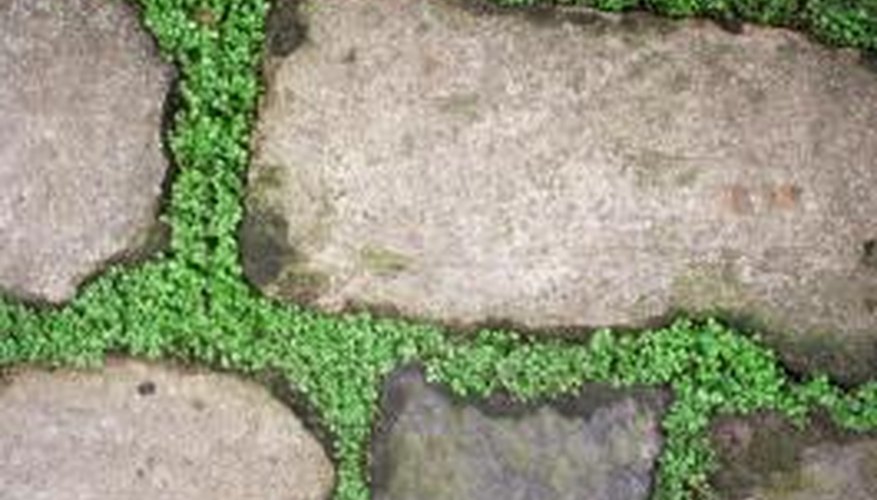Flagstone walkways are a common theme in many gardens and yards. While the type and colour of the flagstone can vary depending on where it is quarried, the principles are the same: large, natural stones placed together to form a pathway. Laying flagstone on a slope is no different than laying flagstone in a flat area, and as long as you have the necessary tools, time and resources you can enhance any section of your own and garden.
Lay out your chosen area for the flagstone walkway. Stretch a garden hose out to use as the outline for your walkway. Use a tape measure to measure the distance between the two sides and run the hose as far as its length will allow (unless your walkway is shorter). Use a can of spray paint to mark the edges of the walkway and remove the hose so you do not damage it during the digging process.
- Flagstone walkways are a common theme in many gardens and yards.
- Use a can of spray paint to mark the edges of the walkway and remove the hose so you do not damage it during the digging process.
Remove the grass and dirt from your walkway area. Dig down at least 4 inches with a shovel within the spray-painted outline. Exact depth is not critical, as you will be packing the area with sand and pebbles later, and compressing the stone within that bed. Measure down with a tape measure if you prefer to be precise about your measurements.
- Remove the grass and dirt from your walkway area.
- Exact depth is not critical, as you will be packing the area with sand and pebbles later, and compressing the stone within that bed.
Prepare the base layer of your walkway. Cover the bottom layer of your walkway with at least 2 inches of pea gravel, and then put at least 2 inches of rough sand on top of that. At this point, your walkway area should be roughly full with pea gravel and sand. Run the dirt compactor over the top of this foundation layer to compress it and force the sand and gravel into the dirt below.
Install your flagstone walkway. Start at the bottom of the sloped area and work your way up the slope so that the higher stones rest against the lower stones or the joints in between them after they are filled with sand. Place each piece of individual stone into the bed of compacted pebbles and sand and tap them into place with a rubber mallet. Each piece of subsequent stone may be placed as close or as far away from its neighbour as you choose, as joint size is irrelevant for flagstone paths.
- Install your flagstone walkway.
- Start at the bottom of the sloped area and work your way up the slope so that the higher stones rest against the lower stones or the joints in between them after they are filled with sand.
Fit the stones together like a puzzle based upon their unique sizes and shapes. Turn each stone in different directions to achieve your desired look. Larger stones may be broken into smaller chunks by hitting them with the back end of the masonry hammer to fit into areas such as around the edges or between larger stones.
Fill the joints between the flagstones with sand after you have finished installing all of the stones. Shovel sand onto the top of the walkway and cover it with a depth of at least an inch above and beyond what goes into the joints between the stones. Run the compactor over the entire surface to ensure the sand is compacted completely into the joints between the stones, and then sweep the remaining sand away from the surface to expose your finished flagstone path.
TIP
All of your supplies and materials can be rented or purchased at your local home improvement store.
WARNING
Always wear protective gear when working with power tools. In addition, be sure to wear safety glasses when breaking off chunks of stone.
